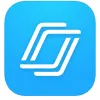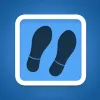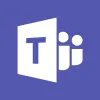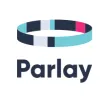Interactive Lessons and Video
Edulastic

Powerful standards-based assessment tool tracks student progress
Bottom Line: An efficient platform -- especially for test prep -- that helps teachers track student progress on standards mastery.
Flip
Pose questions, spark thoughtful video responses with stellar tool
Bottom Line: This accessible, approachable tool offers connection, multiple means of expression, and creativity to apply to almost any topic.
LessonUp

Flexible interactive presentation tool engages kids at school and home
Bottom Line: It's great for creating customized and differentiated lessons, but it might not be accessible for every student.
Nearpod

Engage and assess students with media, videos, and interactive slides
Bottom Line: The teacher- or student-paced learning can improve 1-to-1 environments and the learning activities are top notch.
PlayPosit

Interactive video creator has great question variety
Bottom Line: This tool strikes a nice balance, offering teachers an easy intro to interactive video mixed with a large set of features that can lead to increasingly sophisticated lesson design.
Edpuzzle
Crop, customize, and remix online video content with interactive tool
Bottom Line: As a tool for the flipped classroom or for student-led creation, a cool tool for teachers to create and share engaging video content.
Hypersay

Live presentation tool adds interactivity to stale slide decks
Bottom Line: This easy-to-use tool gets students more involved in presentations, but a lot of teachers might use similar tools already.
Pear Deck
Interactive slideshows offer a variety of ways to engage and assess
Bottom Line: It’s an appealing platform that can improve formative assessment, particularly for teachers using Google Classroom.
Wooclap

Versatile polling/presentation tool boasts great question variety
Bottom Line: This tool supports student-centered teaching by pushing real-time participation/feedback beyond simple polls and multiple-choice questions.
ClassFlow
Robust lesson creation and delivery tool aids assessment
Bottom Line: With some creativity, this interactive platform can support instruction and assessment.
Quizzing, Polling, and Student Response
Classkick

Assign, assist, and assess with real-time, interactive classroom
Bottom Line: It's a great option for teachers who want to go paperless, provide specific feedback, and encourage collaboration among students in virtual or 1-to-1 classrooms.
Kahoot!
Game-like student-response tool can spark competitive fun
Bottom Line: This is an effortlessly fun tool, but it shines best with creative implementation that tests its boundaries.
Mentimeter

Call on everybody at once with flexible, interactive presentation tool
Bottom Line: This tool's dynamic presentations strike a nice balance between information and interaction.
ASSISTments
Functional, if not flashy, tool helps assess math skills
Bottom Line: With some purposeful planning, this tool can offer a simple and free way to gather critical data, but it won't dazzle students.
Formative
Superb real-time assessment tool a fit for 1-to-1, BYOD classrooms
Bottom Line: This smart tool helps teachers gather a variety of student response types and then offer targeted feedback.
Plickers
Useful, low-tech rapid-response tool promotes formative assessment
Bottom Line: This can be a useful tool for getting quick feedback or snapshots of learning in tech-limited classrooms.
Sero!
Fresh approach to assessment through concept maps shows promise
Bottom Line: This unique formative assessment platform's success will largely depend on teachers to keep content meaningful and relevant.
Slido
Increase student buy-in with interactive polls and Q&A sessions
Bottom Line: Engaging classroom response platform offers teachers and students real-time feedback opportunities.
Socrative

Snapshot polls and quizzes offer formative and summative assessments
Bottom Line: This easy-to-use feedback and assessment tool might not dazzle students, but it can support responsive teaching.
Gimkit

Group game-show fun and independent study in one engaging tool
Bottom Line: This tool's unique spin on game shows could increase engagement, or offer classrooms burned out on other tools something new.
Quizalize

Customizable quiz tool harnesses data to steer learning
Bottom Line: From content delivery to assessment, this well-designed platform supports the whole learning process once you uncover all of its features.
GoSoapBox

Audience response tool gives instant feedback despite dated design
Bottom Line: It's an easy-to-learn, practical tool for online formative assessment and limited student interaction.
Poll Everywhere

Straightforward student-response tool engages kids with minimal setup
Bottom Line: Quick setup and interactive features allow students to engage and teachers to receive and provide immediate feedback.
Discussion and Feedback
Mote

Attach, translate, and transcribe audio comments in G Suite
Bottom Line: If you already use Google Workspace, this simple add-on can make it easier to send comments and feedback to students in the virtual space.
Floop
Collaborative feedback platform helps teachers target, students respond and revise
Bottom Line: Time-saving tool allows teachers to gain valuable insights into student learning while providing more personalized feedback and scaffolded supports.
Microsoft Teams

Collaborative LMS platform helps manage classes, groups, and projects
Bottom Line: Educators will likely find that the wide variety of features Teams offers is worth the time it takes to learn how to use it.
Parlay

Comprehensive discussion platform develops critical-thinking skills
Bottom Line: A great tool in any subject or topic for teachers looking to make discussion a central part of their classroom.
Kaizena

Nifty add-on enables audio and text feedback in Google Docs
Bottom Line: If your classroom relies a lot on Google Docs, this might just be the feedback tool you're looking for.
Backchannel Chat

Real-time, moderated online discussions can engage and encourage
Bottom Line: This tools offers a fun, simple, and safe way to hold real-time online discussions that might just increase engagement, interest, and even learning.
YO Teach!

Backchannel tool offers interactive polls, drawing, messages, and more
Bottom Line: Quick setup and multimodal features make this a great fit for a variety of carefully monitored classroom discussions.
Piazza

Advanced Q&A tool compels collaboration, higher-order thinking
Bottom Line: Encourage collaborative, student-centered learning with this useful platform, but make sure it's the right fit for your students.









